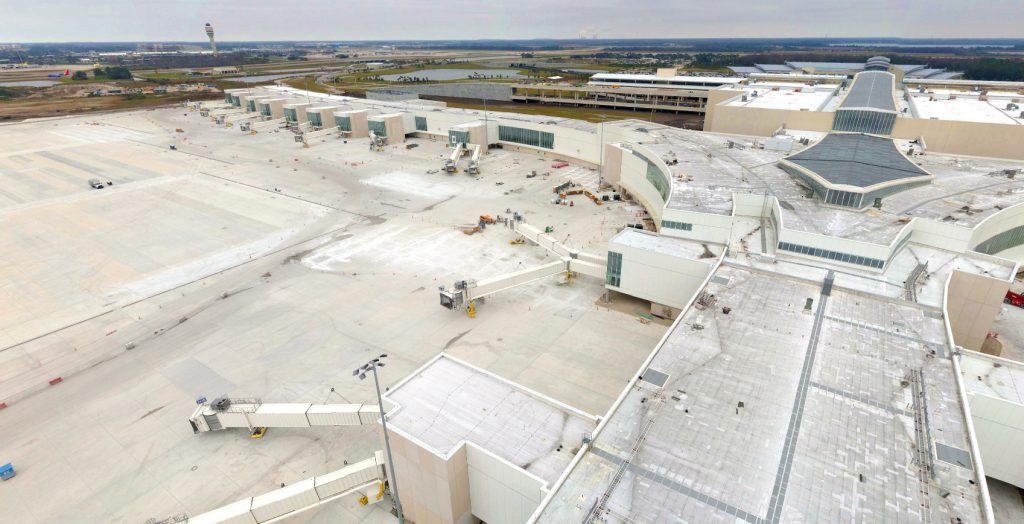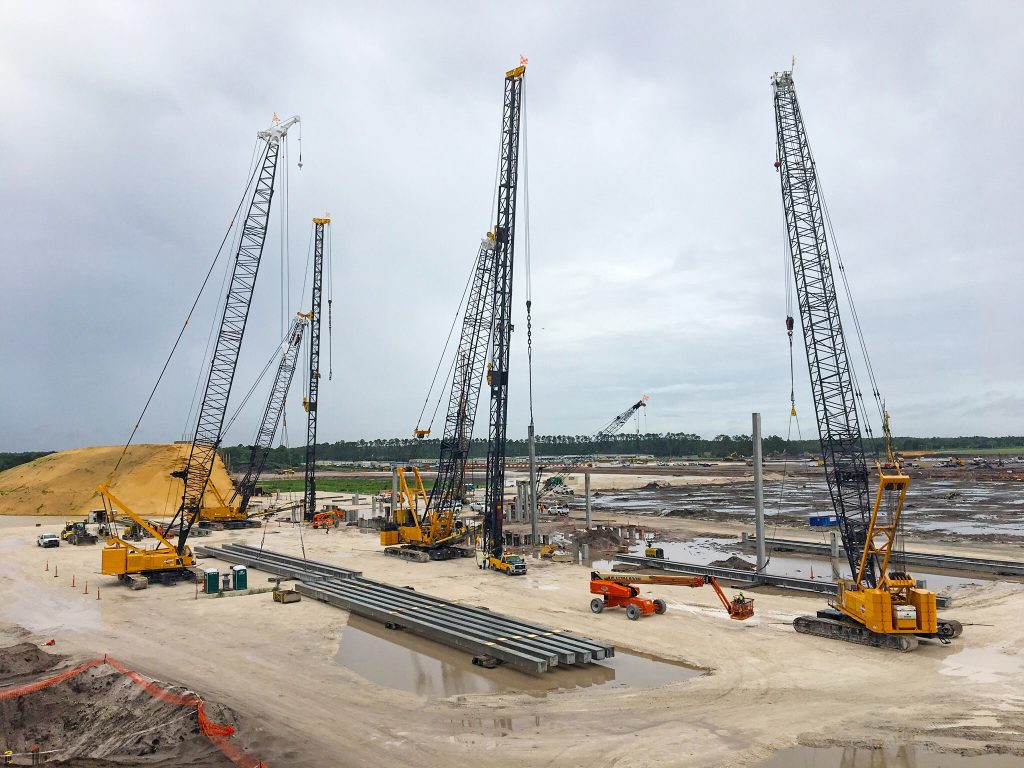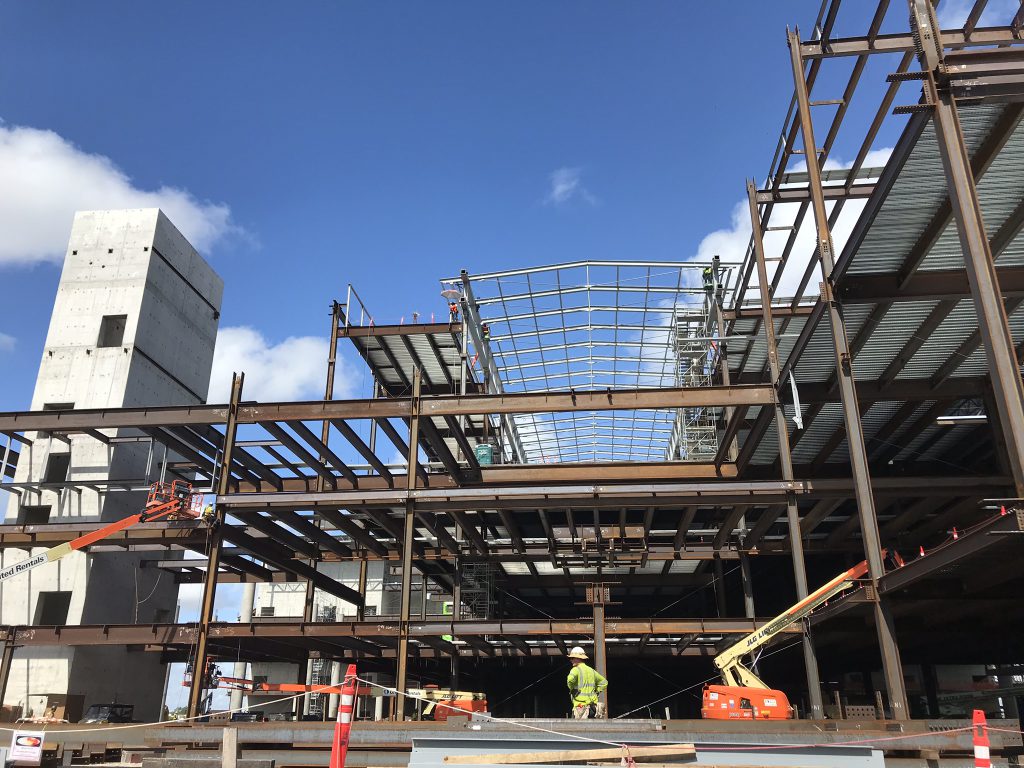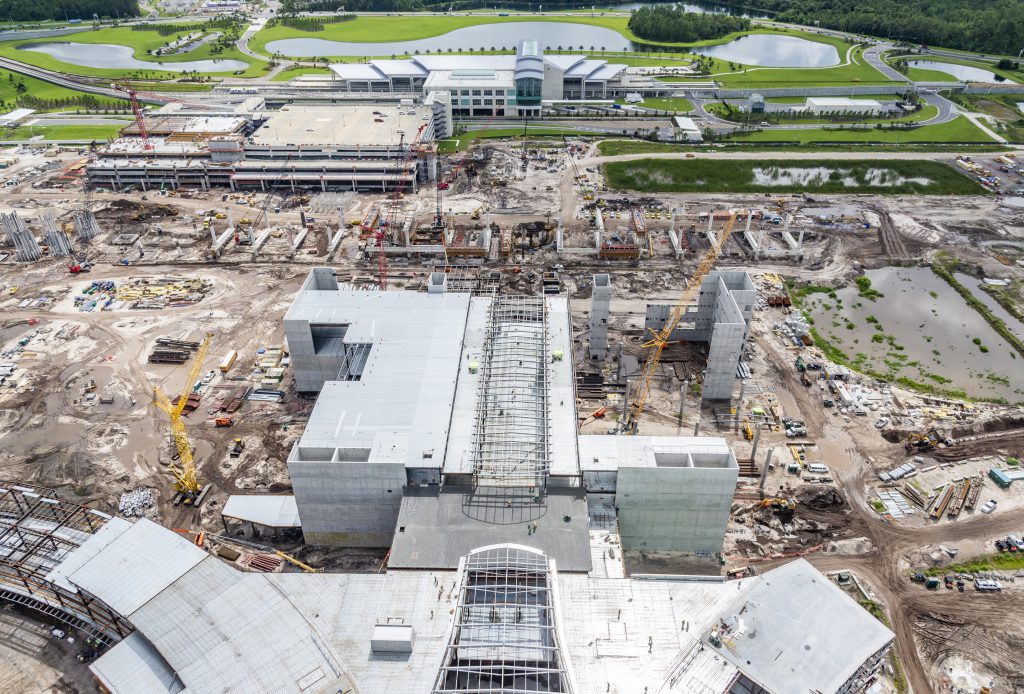After the equivalent of a flight with some not-so-minor turbulence, Kiewit is preparing for a smooth takeoff when the new South Terminal C at Orlando International Airport opens this summer.
Pre-pandemic, Orlando, Florida, was enjoying the distinction of being the top family vacation destination and most visited destination in the United States.
Home to seven theme parks, including Walt Disney World — and with 75 million visitors in 2019 — the Orlando area was hopping.
Orlando International Airport (airport code MCO) was equally busy: It reached a record 50.1 million passengers that year, making it the busiest airport in Florida.
Welcoming millions of travelers
The Greater Orlando Aviation Authority (GOAA) had a plan to relieve some congestion and accommodate more air service.
In late 2016, GOAA awarded Kiewit and its joint venture partner, Turner Construction, a Construction Manager at Risk (CMAR) contract to provide preconstruction phase services and construction management for the South Terminal C.
A $1.4 billion project, the South Terminal is the first phase of an expansion that will add a third, half-mile-long access point to the airport.
When it opens this summer, the terminal will have 15 additional gates, accommodating up to 20 aircraft. An estimated 10 to 12 million travelers will use it annually.
GOAA tapped Turner-Kiewit to oversee a range of projects, including a 932,000-gross-square-foot landside terminal building, a nearly 110,000-gross-square-foot ground transportation facility, six-level 402,000-gross-square-foot parking garage, and 96 acres of landside civil work.
The job also included site logistics relocation and constructing a central energy plant, emergency power generation plant, AOA Security Checkpoint Delta, a new taxiway and apron, tying into multiple active
existing runways.
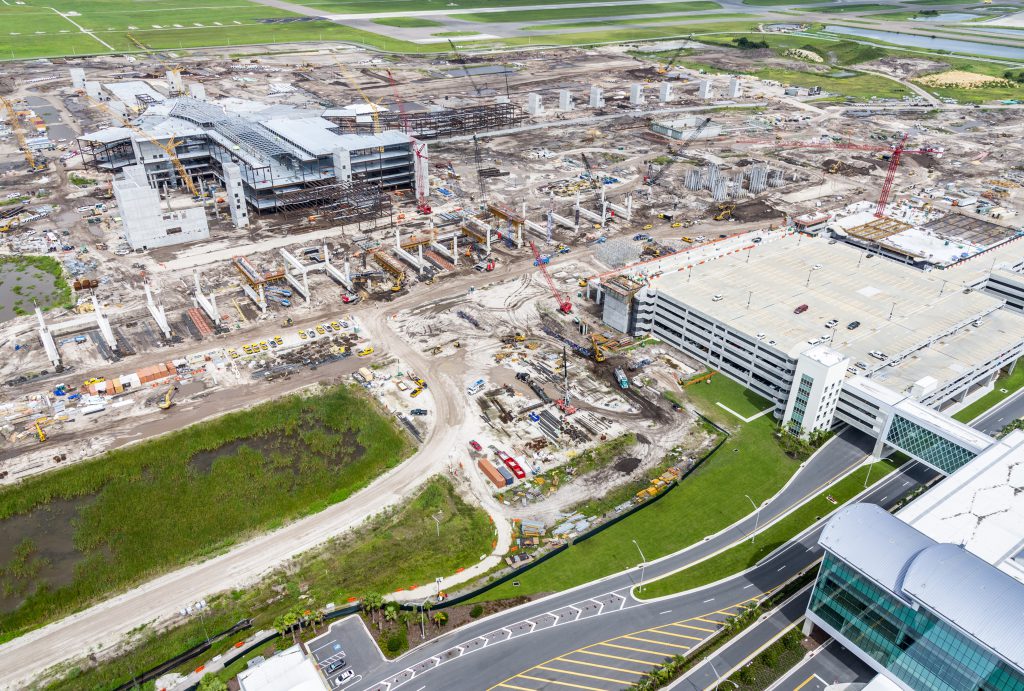
Managing the GMP contracts
The massive scope of work gave the team an opportunity to divide the project into multiple Guaranteed Maximum Price (GMP) contracts, some of which Kiewit took on as self-perform work.
Breaking up the project into 31 GMPs and managing the scope for each one was one of the biggest challenges for the project.
“Midway through construction, we managed a major change order to add three additional gates. We went through about a year of design input, change order processing and getting that out to the trades,” said David Crane, project manager.
“Once the design is finished, under normal circumstances, they still have to incorporate changes from airlines. There are customizations they need inside the building, always something, which is what makes CMAR the right contract model for GOAA.”
Taking over a big project
The largest GMP contract — the airfield civil works, which included 566,000 square yards of concrete paving and construction of a drainage system — came later. GOAA switched from a previous construction manager to find more favorable pricing for the expanded package.
“They approached us and asked us if we would be interested in pricing the work,” said Nick Sosa, who started as project manager on the CMAR and currently is area manager. “We did that, and we were successful. A big reason we got that work was our previous performance at the airport and their knowledge of Kiewit as a company.”
Taking over the contract required a careful assessment of what had been done to date and what was left to do.
“The job team had to perform inventories and inspections of the on-site materials before the start of work, to avoid double-ordering, complete subcontractor and material contracts for the correct quantity, and to make sure they met specifications,” said Sarah Schultz, project manager for the airfield civil work.
Framing the problem, offering solutions
By the time the pandemic hit in spring 2020, Kiewit was already one year into the airfield civil project, and the work itself was already 40% complete.
But tourists were staying home. And GOAA needed to cut costs.
With changing financial projections, the owner directed the team to reduce, or “de-scope,” large parts of the project.
The square footage of the concrete paving was reduced by 25%, from 566,000 square yards to about 423,000 square yards, which reduced that contract amount by about $20 million.
“The owner’s funding sources are primarily through the revenues generated by the airport,” said Kent Oberle, project sponsor. “I think the global impact and how that affected our team, our job, with the owner’s revenue projections has been another big challenge to overcome in the past two years.”
Ben Brown, senior construction manager and owner authorized representative for GOAA, credits Kiewit’s collaboration and cooperation in setting budget limits while still making sure the airport would function for its intended purpose.
“I think that’s where Kiewit does their best work, leading into those uncertain places and helping to really frame the problem and work together with us to offer solutions,” he said.
“They were a big part of helping identify what ways we could save money while also rearranging their work to avoid completing anything that potentially would be de-scoped or deleted.”
Construction of the airfield civil works was a crucial part of the job and included 423,000 square yards of concrete paving and construction of a drainage system.
A segment of the job included overseeing construction of a six-level 402,000-gross-square-foot parking garage.
Crews construct the new landside terminal building, which is estimated to accommodate 10 to 12 million travelers annually.
Logistical challenges
Through all the adjustments the team had to make throughout the project, it also had to share the site with over 90 contractors and subcontractors.
Between the contractors for baggage handling, passenger boarding bridges, airside building, car rental facility, rail, concessions and tenants, as well as GOAA operations, Security, Customs and Border Patrol, the area can get crowded.
Kiewit needed to strike the right balance of getting its work done — and sometimes slowing progress so other parts of the program could be supported.
“The dance they had to do probably set the tone for the whole program,” said Brown. “Kiewit went out of its way to make sure we had safe access, and also to be thoughtful with their own work to make sure they prioritized access for the other parts of the program.”,
Understanding how to communicate and get along with this many other entities requires experience, patience, and above all, an ability to focus on the big picture.
“Just working and playing nice in the sandbox is a daily activity for us,” said Schultz. “We have a weekly coordination meeting with all of the stakeholders and contractors on-site to try to get ahead of these issues. Because they have the same ultimate deadlines we do, we all have to work in tandem to meet the overall goals of opening the terminal.”
‘An awesome sense of pride’
As the project nears completion, the Kiewit team is taking a moment to reflect on the job.
“I have an awesome sense of pride,” said Crane. “For the rest of my life, anytime I’m flying out of Orlando, I’ll be using this terminal as much as possible just to continue to reflect on that. There have been a lot of good memories over a five-year project.”
“I think Kiewit’s culture definitely shines through in the way they lead the projects,” Brown added, “and the way that they’ve had a real focus on the end from the beginning. It’s just a colossal task and the team was up for it.”
